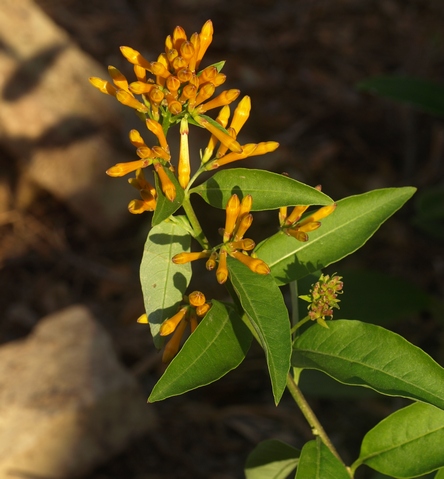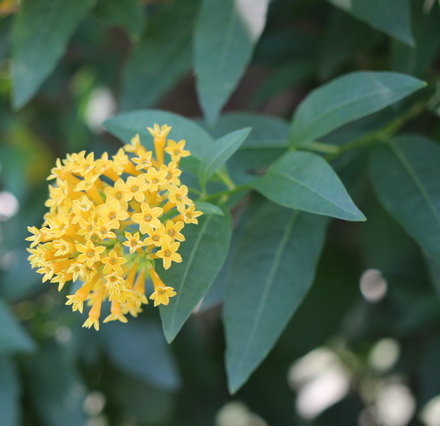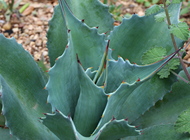 |
Cestrum aurantiacum |
 |

| | Early August – blooming continuously, even though it's looking a little tired in the heat of summer |
| Synonym(s) |
Capraria lanceolata |
| Common name |
yellow cestrum; orange cestrum |
| Family |
solanaceae |
| Life cycle |
perennial/shrub (Z8b-11)  |
| Flowers |
yellow-orange (spring-fall) |
| Size |
6-8' |
| Light |
sun-part shade |
| Cultural notes |
ordinary garden soil, not too dry |
Semi-evergreen shrub (die-back shrub in the colder range of its hardiness) grown for its clusters of golden-yellow flowers that attract a wide range of pollinators. It has grown quickly in our garden, reaching its mature height within two years of planting a small specimen, and confidently claiming that corner of the garden for its own.
|
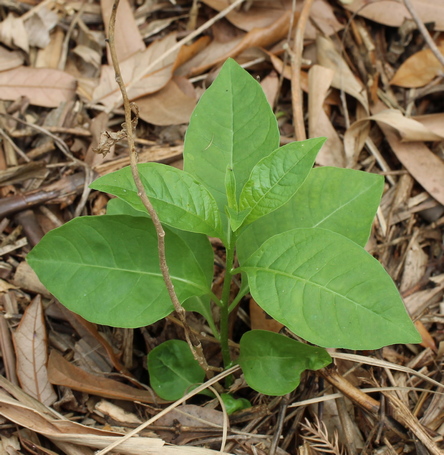
| | What appears to be a single seedling near the mother plant, April 2021 |
| 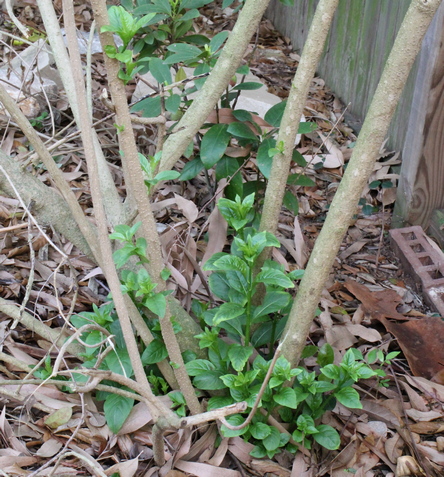
| | Regrowth mostly from the base after Texas megafreeze of Feb '21 |
|

| | Black berries after flowering |
|
In our garden, this plant grows in the following area: right fence border About my plant portraits
PlantLinks to other web pages about Cestrum aurantiacum
I welcome comments about my web pages; feel free to use the form below to
leave feedback about this particular page. For the benefit of other visitors
to these pages, I will list any relevant comments you leave, and if
appropriate, I will update my page to correct mis-information. Faced with an
ever-increasing onslaught of spam, I'm forced to discard any comments including
html markups. Please submit your comment as plain text. If you have a
comment about the website as a whole, please leave it in my
guestbook. If you
have a question that needs a personal response, please
e-mail me.
Last modified:
November 20, 2024
Contact me
|


